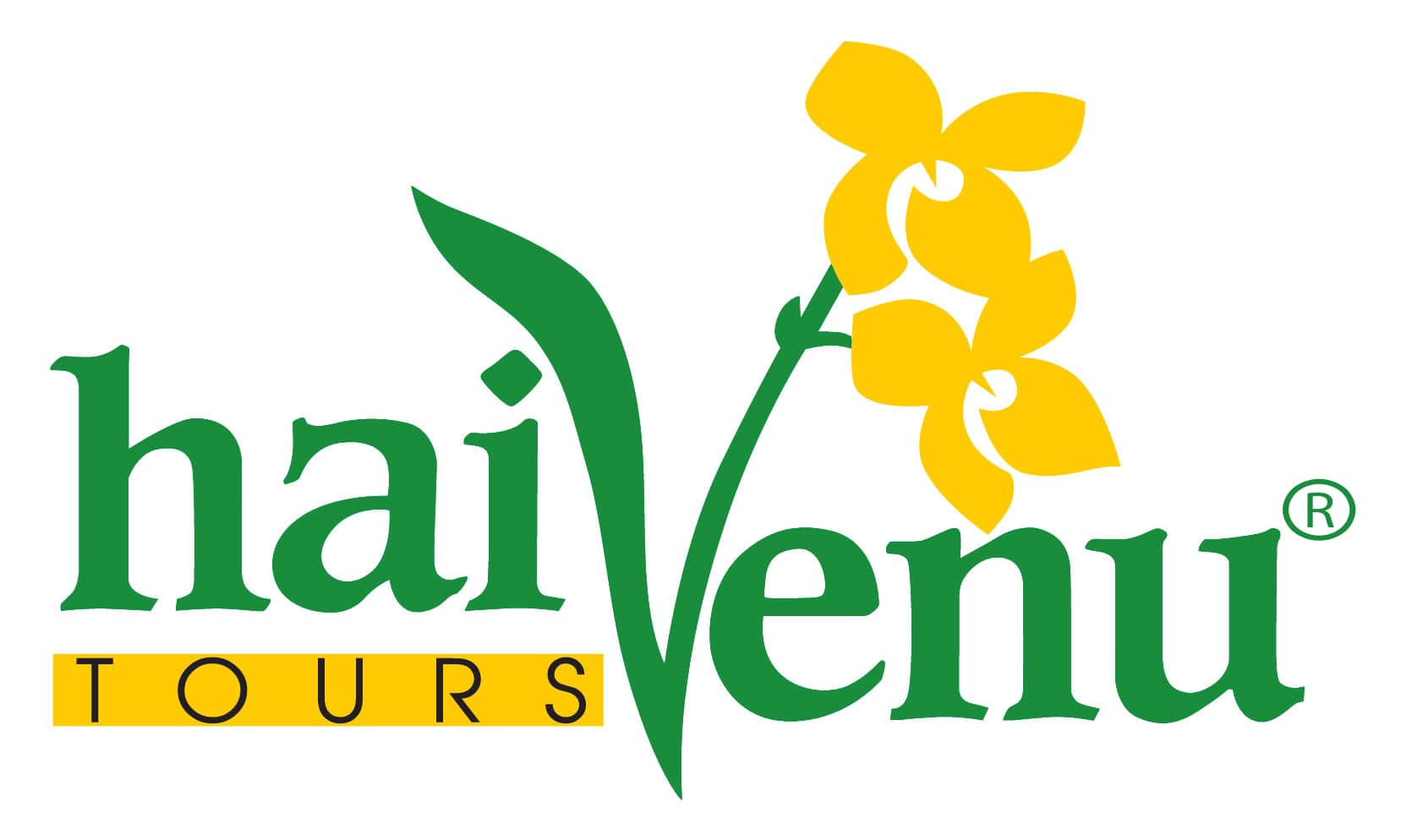Travel Tips – Visa to Vietnam
Last Updated on 8 May, 2024 by admin
Embarking on an adventure to Vietnam starts with navigating the necessary bureaucratic process of obtaining a tourist visa. This guide provides an exhaustive examination of the various options available to travelers, ensuring you have all the information you need to begin your journey smoothly.
Comprehensive Guide to Obtaining a Vietnamese Tourist Visa
Vietnam captivates visitors with its stunning landscapes, from the lush rice terraces in the north to the vibrant waterways of the Mekong Delta in the south. However, before you can immerse yourself in these experiences, you must first navigate the entry requirements. Understanding Vietnam’s visa process is essential for any traveler. This guide delves into the details of obtaining a visa, explaining the three primary methods available and providing tips to handle this essential travel preparation step effectively.
Understanding Visa Requirements
Before exploring the specific visa application options, it’s crucial to comprehend the general visa requirements for Vietnam. Most travelers will need a visa, except for those from a few exempt countries.
Eligibility and Basic Requirements
- Passport Validity: Must be valid for six months beyond the date of entry.
- Blank Passport Pages: At least two blank pages.
- Proof of Onward Travel: Confirmed onward or return tickets.
- Financial Proof: Sufficient funds to cover the stay in Vietnam.
Visa Application Methods
Each method of obtaining a visa to Vietnam offers different advantages depending on your location, the urgency of your travel plans, and your preference for convenience over cost.
Applying Through a Vietnamese Embassy
For many travelers, applying for a Vietnamese visa through an embassy or consulate in their home country is the most straightforward method. This traditional approach is generally preferred by those who like to have everything arranged before departure, ensuring all travel documents are in order prior to their trip.
Step-by-Step Process
- Locate the Nearest Embassy: The first step in the visa application process is to locate your nearest Vietnamese embassy or consulate. This can be done by visiting the official website of the Vietnamese government’s Ministry of Foreign Affairs, which lists all diplomatic missions worldwide. This site provides addresses, contact numbers, and often links to individual embassy websites where specific national details and procedures are outlined.
- Application Form: Once you have identified the nearest embassy, the next step is to obtain the visa application form. Many embassies offer the option to download this form from their websites, allowing you to fill it out in advance. Alternatively, you can visit the embassy in person to pick up the form. Ensure that you carefully read the instructions to avoid any mistakes that could delay the processing of your application.
- Document Submission: With the completed application form, you should submit it alongside your passport, which must have at least six months of validity beyond the date of your planned arrival in Vietnam. Additionally, you will need to provide passport-sized photos that meet the embassy’s specifications. Some embassies may require further documentation, such as proof of your travel itinerary (flight bookings, hotel reservations), proof of financial means, or a letter of invitation from a host in Vietnam. Check with the specific embassy’s requirements before your visit.
- Fees and Processing Time: The visa application fee typically ranges between $25 to $30 USD, but this can vary depending on the type of visa and your nationality. Some embassies may also charge a service fee for processing your application. Fees can usually be paid by cash, credit card, or money order, depending on the embassy’s accepted payment methods. Once your application and payment are submitted, the processing time is generally about three working days, although this can vary depending on the embassy’s workload and specific processing times.
Potential Complications
- Delays: Visa processing delays are not uncommon, especially during peak travel seasons such as holidays or the summer tourist period. Embassies receive a higher volume of applications during these times, which can extend processing times. To mitigate this, apply for your visa well in advance of your travel date.
- Incomplete Documentation: One of the most common reasons for delayed visa processing is incomplete or incorrect documentation. Before submitting your application, double-check that all forms are filled out completely and accurately and that all required documents are included. Missing information or documentation can lead to significant delays, as the embassy will need to contact you to resolve any issues.
- Passport Validity Issues: If your passport does not meet the minimum validity requirement (six months beyond your intended stay), your visa application may be rejected. Ensure that your passport has enough validity and blank pages before applying.
- Changes in Visa Policy: Visa policies can change with little notice. Stay updated by checking the embassy’s website regularly or contacting them directly to confirm current requirements and procedures.
By understanding and preparing for these potential complications, you can enhance the likelihood of a smooth visa application process, setting the stage for a stress-free arrival in Vietnam.
Using an Authorized Agency to Obtain a Vietnamese Visa
Many travelers opt to simplify their travel preparations by utilizing the services of a travel agency. This is particularly advantageous for those who wish to avoid the complexities of direct government interaction during the visa application process. Agencies such as Haivenu offer a streamlined approach to visa procurement, handling all necessary paperwork and coordination with immigration authorities, which can be a significant convenience, especially for tourists booking comprehensive travel packages.
Step-by-Step Process
- Initiate Process:
The visa application process through an authorized agency begins when you provide your personal and travel details. Typically, the agency will send you a form via email or direct you to an online platform where you can enter your information securely. This form will ask for details such as your full name, passport number, dates of travel, and other pertinent information required by the Vietnamese Immigration Office. - Agency Application:
Once you submit your details, the agency takes over the bulk of the application process. They compile and review your information to ensure accuracy and completeness before submitting it to the Immigration Office in Hanoi. This step is crucial as any errors can delay the processing of your visa. - Approval and Collection:
After the agency submits your information, the processing time can vary, but typically, approval takes about five working days. Once approved, the agency will receive an approval paper, which they will then relay to you. Depending on the service arrangement, you may need to send your passport to the nearest Vietnamese Embassy or Consulate to have the visa sticker applied. Alternatively, some agencies arrange for you to pick up the visa in person, either at the embassy or at a designated agency office.
Benefits and Costs
Using an authorized agency to handle your Vietnamese visa application offers several benefits, key among them being convenience. Here are some detailed advantages and the associated costs:
- Convenience:
The primary benefit of using an agency is convenience. By handling the interactions with the Vietnamese government, the agency removes a significant administrative burden from you. This is particularly beneficial for busy individuals or those unfamiliar with the visa application process. - Expertise and Support:
Travel agencies are experienced in dealing with immigration authorities and understand the nuances of the visa process. They can provide valuable advice on the type of visa most suited to your travel plans and help navigate any issues that might arise during the application process. - Time Savings:
By outsourcing the visa application process to an agency, you save time that would otherwise be spent filling out paperwork, tracking application status, and possibly correcting errors. This allows you to focus on other aspects of your trip planning. - Costs:
The service fee for using an agency is typically around $10 USD, which covers the administrative efforts of handling your application. This fee is in addition to the standard visa fee, which ranges from $25 to $30 USD depending on your nationality and the type of visa. Therefore, the total cost using an agency generally ranges from $35 to $40 USD. While this may be slightly higher than applying directly, the added expense can be worth the reduced hassle and added support.
Choosing to use an authorized agency like Haivenu for obtaining a Vietnamese visa can significantly streamline the process, especially for those planning a comprehensive visit to Vietnam. While there is an additional cost associated with this service, the benefits of convenience, expert guidance, and time savings make it a worthwhile investment for many travelers. This option is particularly appealing to those who prefer to avoid the often time-consuming and sometimes complex direct dealings with governmental immigration processes.
Visa on Arrival (VoA) for Vietnam: A Detailed Exploration
For many travelers, obtaining a visa prior to departure can be challenging, especially if they are located far from a Vietnamese embassy or consulate. The Visa on Arrival (VoA) presents a convenient alternative, minimizing pre-travel bureaucracy and simplifying the entry process into Vietnam. This option is particularly advantageous for those who need to arrange travel on short notice or prefer to handle fewer formalities before departure.
Step-by-Step Process
- Application via Agency:
The process begins with selecting a reputable travel agency authorized to facilitate VoAs. You will need to provide your personal information, which typically includes full name, passport details, dates of travel, and sometimes the purpose of your visit. This information must be accurate to ensure that there are no issues with your application. - Receiving the Approval Letter:
Once your details are submitted, the agency coordinates with the Immigration Office in Hanoi to obtain an approval letter on your behalf. This document is crucial as it serves as your primary authorization to board your flight to Vietnam and to receive your visa upon arrival. The agency typically sends this letter to you via email, and you should print it out to present at the airport. - Arrival in Vietnam:
Upon landing in Vietnam, proceed to the Visa on Arrival counter at the airport. Here, you will present your approval letter, a passport-sized photo, and your passport. You will also be required to fill out a short entry/exit form. After these documents are submitted, you will pay the visa fee, which must be paid in USD or Vietnamese Dong. Fees vary depending on the type of visa (single entry, multiple entry, duration of stay) but generally range from $25 to $50 USD.
Considerations and Tips
- Printed Approval Letter: Always carry a printed copy of your approval letter. Although digital copies are widely accepted, having a physical copy is essential as it may be required by the airline before you board your flight or by immigration authorities when you land.
- Accuracy of Information: Ensure that all personal information submitted to the agency matches the details in your passport. Discrepancies can lead to delays or denial of entry at the Vietnamese border.
- Visa Fee Payment: Be prepared to pay your visa fee in cash. While some VoA counters might accept credit cards, it is not guaranteed, and having the exact cash amount simplifies the process.
- Arrival Airports: VoA is only available at certain international airports in Vietnam, including Noi Bai International Airport (Hanoi), Tan Son Nhat International Airport (Ho Chi Minh City), and Da Nang International Airport. Make sure your entry point into Vietnam offers VoA services.
- Queue Times: Be prepared for potential waits at the Visa on Arrival counter, especially during peak travel seasons. Patience and planning for extra time upon arrival can reduce stress.
- Travel Agency Reliability: Choose a trustworthy and experienced agency to handle your VoA application. Check reviews and confirm their authorization to process VoAs to avoid scams or delays.
- Emergency Contacts: Have the contact information of your travel agency readily available in case there are any issues with your visa upon arrival.
The Visa on Arrival option for Vietnam is an excellent solution for many travelers, providing a balance between convenience and compliance with immigration requirements. By understanding the detailed steps and preparing accordingly, travelers can significantly streamline their entry into Vietnam, ensuring a smooth start to their visit. Whether traveling for tourism, business, or transit, the VoA allows for a relatively hassle-free entry process, making it a popular choice for those looking to explore the beauty and culture of Vietnam with minimal pre-trip visa worries.
Additional Considerations for Traveling to Vietnam
Traveling to Vietnam, like venturing to any foreign destination, involves more than just handling visa arrangements. Adequate preparation is essential to ensure a smooth and enjoyable trip. This section covers crucial travel tips and advice that encompass cultural etiquette, health precautions, customs regulations, and addresses frequently asked questions about the visa process and other travel concerns.
Travel Tips and Advice
- Cultural Etiquette:
Vietnam is a culturally rich country with deeply ingrained traditions and social norms. Understanding and respecting these customs can greatly enhance your experience and interaction with locals. For instance, dress conservatively when visiting religious sites, and always remove your shoes at the entrance of someone’s home. It’s also polite to use both hands when giving or receiving an item from someone. Showing respect for local customs not only enriches your travel experience but also fosters mutual respect. - Health Precautions:
When traveling to tropical climates like Vietnam’s, certain health precautions should be taken to avoid common travel-related illnesses. Consult with a travel health professional several weeks before your departure to discuss recommended vaccinations, which may include Hepatitis A, Typhoid, and Japanese Encephalitis. Also, always carry a basic travel health kit that includes medication for traveler’s diarrhea, insect repellent for mosquito-borne diseases, and sunscreen for protection against harsh sun exposure. - Customs Regulations:
Familiarize yourself with Vietnam’s customs regulations to avoid any issues upon entry or departure. Prohibited items typically include weapons, ammunition, explosives, and illegal drugs. Restrictions can also apply to antiques and certain wildlife products under CITES (the Convention on International Trade in Endangered Species of Wild Fauna and Flora). If you’re bringing prescription drugs, carry them in their original packaging along with your doctor’s prescription. Check the latest customs regulations on the official Vietnam Customs website or consult your travel agency.
Frequently Asked Questions
- What should I do if I lose my passport in Vietnam?
If you lose your passport, immediately contact your country’s embassy or consulate in Vietnam. They can assist you with obtaining an emergency travel document. Additionally, file a report at the nearest police station where the loss occurred, as you will need the report for the embassy and potentially for insurance claims. - How should I handle a visa denial?
Visa denials can occur for various reasons, such as missing documentation or failure to meet entry requirements. If your visa application is denied, you should receive an explanation from the visa office. Review the reason for the denial, and if possible, address the issues and reapply. If unclear on the reasons, contact the embassy or consulate for clarification. - What are my options for extending my visa while in Vietnam?
Extending a visa in Vietnam is possible but must be done before the current visa expires. You can apply for an extension through a travel agency or directly at the Immigration Department in major cities like Hanoi or Ho Chi Minh City. The process typically takes a few days, and fees vary depending on the type of visa and the length of the extension.
By considering these additional factors and preparing accordingly, you can ensure a safer, more respectful, and enjoyable visit to Vietnam. This comprehensive approach not only addresses logistical aspects such as visa applications and health precautions but also enriches your cultural engagement, making your trip a more fulfilling experience.
Conclusion
Securing a visa is your first step toward a thrilling exploration of Vietnam. This guide aims to equip you with a thorough understanding of the visa application process, ensuring you can approach this task with confidence. By selecting the best application method for your circumstances, you ensure that your travel plans proceed smoothly, allowing you to
focus on the exciting adventures that await in Vietnam. Whether through direct application, an agency, or upon arrival, each pathway is designed to meet different needs, simplifying your journey to this spectacular destination.




